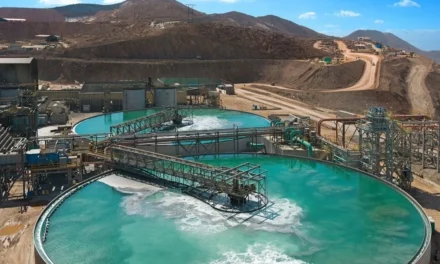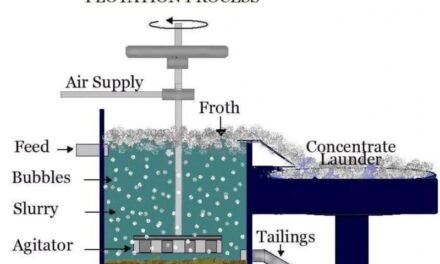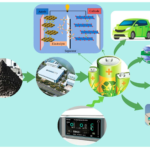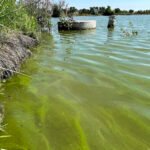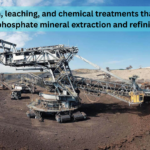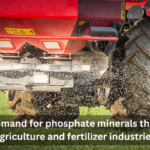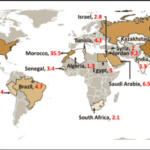Phosphate mining can significantly contribute to environmental issues such as water pollution, eutrophication, and habitat destruction. These issues arise due to the nature of mining operations and the characteristics of phosphate deposits, which can lead to a series of ecological disruptions if not properly managed. Let’s break down how phosphate mining contributes to each of these environmental challenges:
1. Water Pollution
Contribution to Water Pollution:
- Runoff Contamination: Mining operations can result in the release of phosphate dust and heavy metals into nearby water bodies through runoff. This runoff often comes from mining sites or from the processing of phosphate ores (such as beneficiation or washing processes). The chemicals used in the extraction process, such as sulfuric acid in the wet process for phosphoric acid production, can also find their way into water sources.
- Acid Mine Drainage (AMD): Phosphate ores often contain sulfide minerals like pyrite, which, when exposed to air and water, can oxidize and produce sulfuric acid. This process leads to the formation of acid mine drainage, which can contaminate nearby streams, rivers, and groundwater with toxic metals such as arsenic, cadmium, lead, and mercury, severely impacting aquatic ecosystems and drinking water sources.
- Toxic Runoff from Tailings Ponds: Phosphate mining generates large quantities of waste known as tailings, which can contain harmful chemicals and metals. If tailings are not managed properly, rainwater can carry these contaminants into nearby water bodies, increasing the levels of nitrates, phosphates, and toxic metals in the water, thus impacting water quality.
Mitigation Strategies:
- Use of tailings containment ponds with proper liners to prevent contamination of groundwater and surrounding environments.
- Implementing water treatment technologies (e.g., reverse osmosis, flocculation) to treat contaminated water before it is discharged into natural water sources.
- Acid neutralization techniques (e.g., using lime to neutralize sulfuric acid) to reduce the harmful effects of acid mine drainage.
2. Eutrophication
Contribution to Eutrophication:
- Excess Phosphates in Water: Phosphate is a key nutrient for plant growth, but when it is introduced into water bodies in excessive amounts (as a result of mining runoff or improperly treated wastewater), it can trigger the process of eutrophication. Eutrophication occurs when excess nutrients (particularly phosphates and nitrates) cause excessive growth of aquatic plants, including algae.
- Algal Blooms: The overabundance of phosphates in water leads to the proliferation of algae (often referred to as algal blooms). These blooms deplete oxygen in the water, create dead zones, and reduce biodiversity by suffocating aquatic life and disrupting ecosystems.
- Water Quality Degradation: Eutrophication can lead to a decline in water quality, affecting the usability of the water for drinking, irrigation, and recreation. The process can also produce toxins from certain types of algae (e.g., cyanobacteria), which pose health risks to both humans and animals.
Mitigation Strategies:
- Implement best management practices (BMPs) in mining operations to reduce the release of excess phosphates into nearby water bodies. This includes erosion control, sediment trapping, and reducing runoff through the use of buffer zones.
- Regular monitoring of water quality to detect early signs of nutrient overload and manage phosphorus concentrations.
- Use of constructed wetlands and wetland treatment systems to absorb excess nutrients and prevent eutrophication in water bodies.
3. Habitat Destruction
Contribution to Habitat Destruction:
- Land Clearing: Phosphate mining requires the removal of large areas of vegetation and soil, which results in the destruction of natural habitats for local wildlife. The clearing of forests, wetlands, and grasslands can significantly reduce biodiversity, displacing plant and animal species that depend on these ecosystems.
- Altered Landscapes: Mining operations often reshape the land, creating open pits, tailings ponds, and large piles of waste materials. These alterations prevent the natural recovery of ecosystems, reducing the availability of habitats for species and disrupting migration corridors.
- Fragmentation of Ecosystems: As mining operations expand, they create fragmented landscapes that make it difficult for wildlife to access resources and connect with other populations. This can lead to reduced genetic diversity and make species more vulnerable to extinction.
- Soil Erosion: Removing vegetation and disturbing soil during mining increases erosion and sedimentation in nearby water bodies. Erosion can degrade both aquatic and terrestrial habitats by increasing sedimentation in rivers and lakes, disrupting water quality, and burying important habitats for fish and other aquatic species.
Mitigation Strategies:
- Progressive Reclamation: Implement progressive reclamation strategies where the mined land is restored to its original or a usable state during the mining process itself, not just after mining has ended.
- Wildlife Corridors: Design mining projects to minimize habitat fragmentation by creating wildlife corridors that allow animals to safely move between fragmented habitats.
- Reforestation and Habitat Restoration: After mining operations are completed, restore the land through reforestation, wetland reconstruction, or the planting of native vegetation to help rebuild ecosystems and provide habitats for wildlife.
- Buffer Zones: Establish buffer zones around sensitive habitats, such as waterways, forests, and wetlands, to prevent mining activities from directly impacting these critical areas.
4. Noise and Light Pollution
While not as commonly discussed, noise pollution and light pollution from mining operations can also affect surrounding habitats and wildlife. The constant noise from equipment, blasting, and transport can disturb local wildlife, especially in ecosystems that are sensitive to human disturbance, such as wetlands and forests. Similarly, artificial light at night can disrupt the natural behaviors of nocturnal species.
Mitigation Strategies:
- Employ noise-reducing technologies (e.g., quieter machinery, sound barriers) and ensure that mining activities are concentrated during daylight hours to minimize disruption to surrounding habitats.
- Implement lighting controls to reduce light pollution by using shielded lights and focusing lighting on areas where it is most needed.
Conclusion
Phosphate mining contributes to environmental challenges such as water pollution, eutrophication, and habitat destruction through various mechanisms. Runoff from mining sites, acid mine drainage, and improper management of mining waste can lead to water contamination and nutrient overload in aquatic ecosystems. The clearing of land for mining operations destroys habitats, disrupts ecosystems, and contributes to erosion. These impacts can severely affect biodiversity and the health of local environments.
However, through effective mitigation strategies such as water treatment, progressive land reclamation, buffer zones, and sustainable mining practices, the environmental footprint of phosphate mining can be reduced. By prioritizing environmental stewardship and incorporating modern technology and regulations, the mining industry can help protect ecosystems while continuing to supply the world with essential phosphate products for agriculture.
Hashtags
#PhosphateMining #WaterPollution #Eutrophication #HabitatDestruction #MiningImpact #MiningPollution #EnvironmentalRisks #PhosphatePollution #SustainableMining #EcoMining #WaterContamination #MiningWaste #MiningReclamation #PhosphateWaste #MiningEnvironment #SoilDegradation #EnvironmentalProtection #MiningSustainability #PollutionControl #EcosystemImpact


